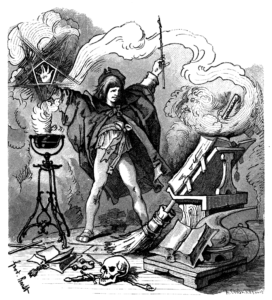Dukas, The Sorcerer’s Apprentice
 We are in Germany, Halloween is upon us, and Goethe’s house sits 100 yards away. So what makes more sense for this week’s pick than The Sorcerer’s Apprentice, a poem by Goethe set to music by Paul Dukas?
We are in Germany, Halloween is upon us, and Goethe’s house sits 100 yards away. So what makes more sense for this week’s pick than The Sorcerer’s Apprentice, a poem by Goethe set to music by Paul Dukas?
Goethe’s poem, Der Zauberlehrling, written in 1797, contains only 14 short stanzas. The musical composition based on the poem by Dukas (1865-1935) premiered in 1897 and became an instant hit. But perhaps the work’s greatest success came when Disney popularized Dukas’ music in his 1940 animated film Fantasia. (Could Goethe possibly have conceived Mickey Mouse in the title role?)
You know the story. The young apprentice uses his fledgling skills to avoid his chores, making the broomsticks carry the water. But he loses control of events, unable to stop the forces he has set in motion, until the master returns to restore calm.
Dukas called his composition a scherzo, a term literally meaning “joke” or “gest.” The name “scherzo” generally refers to a humorous work with a fast tempo. In the 19th century, symphonic writers often substituted a scherzo for the minuet that had traditionally comprised the third (dance) movement of symphonies decades earlier. But scherzos could also stand alone, as this one does. The humorous name “scherzo” obviously applies, but The Sorcerer’s Apprentice is better thought of as a tone poem or symphonic poem. A tone poem, pioneered in the mid 19th century by Franz Liszt, is an orchestral composition driven by a narrative. It was destined to become the model for the modern film score.
Dukas suffers from being listed among the one-hit wonders of music. But even so, he did rather well as composer of an engaging tone poem that found its way into an iconic movie and entered the consciousness of generations of children.



